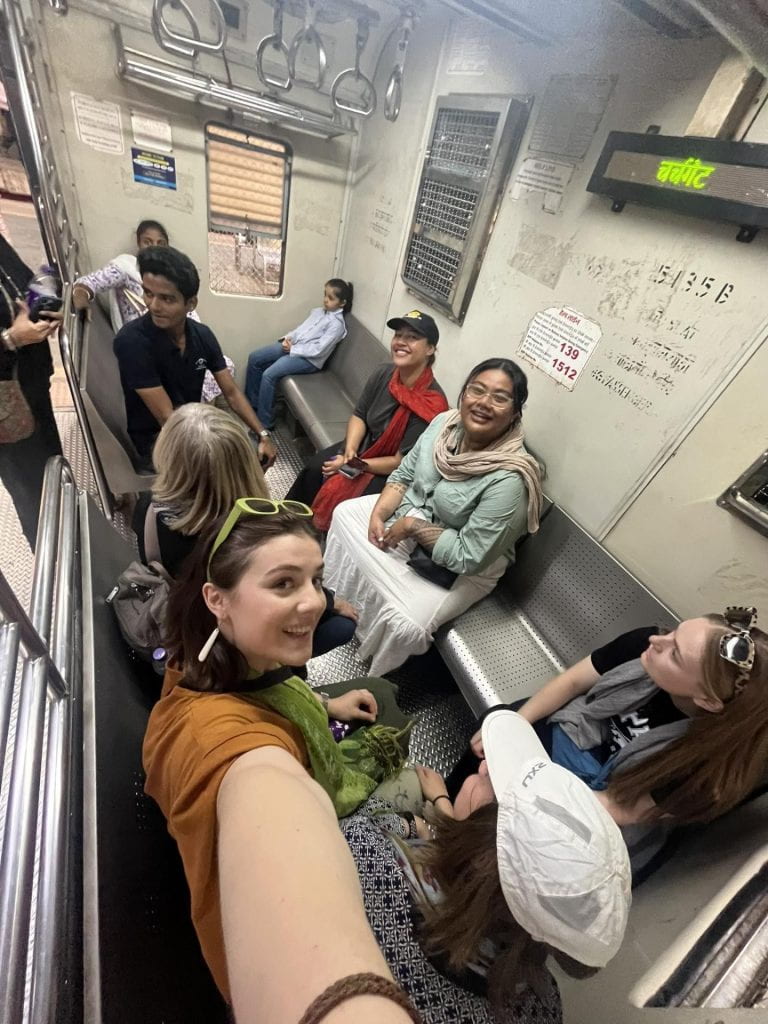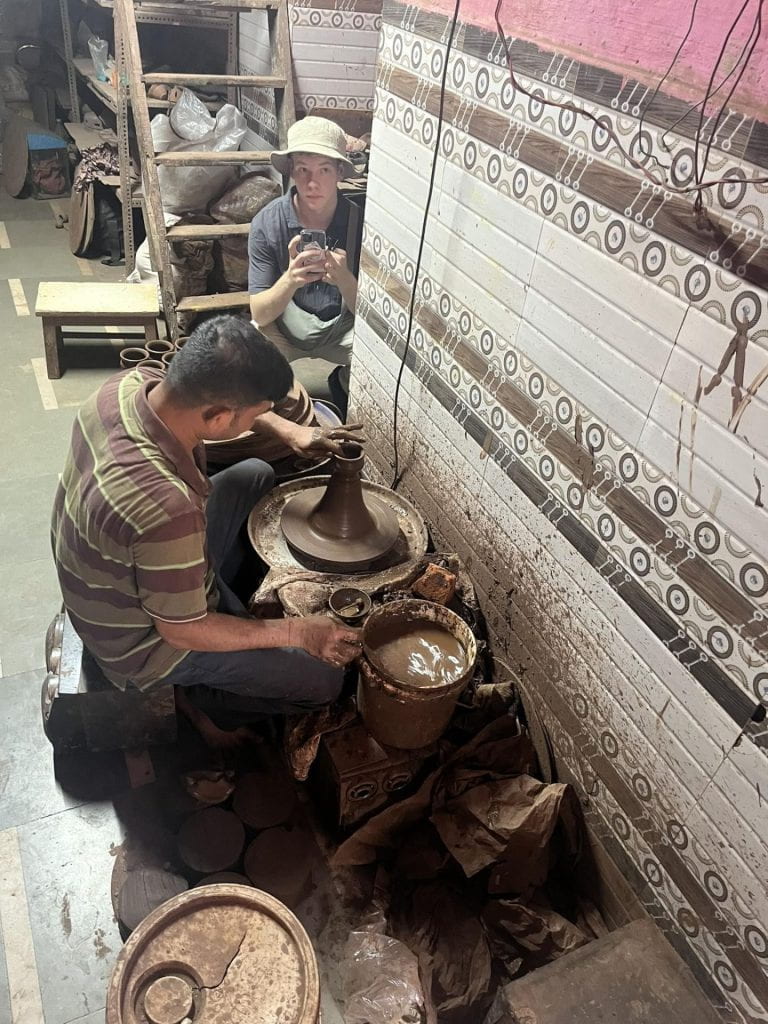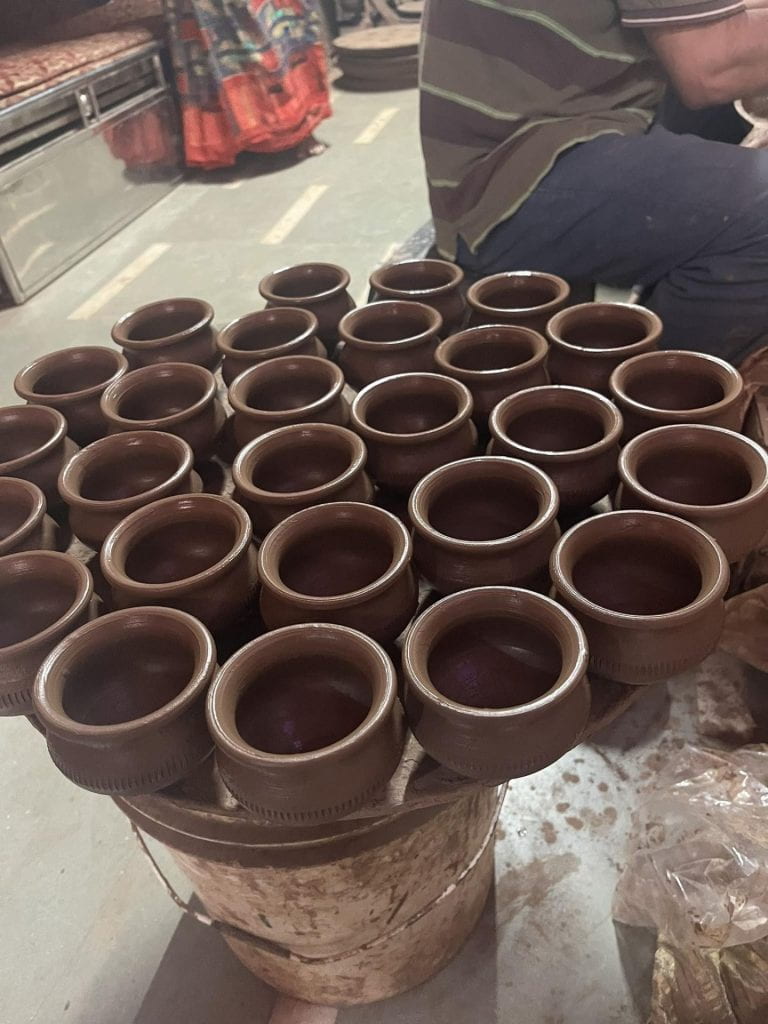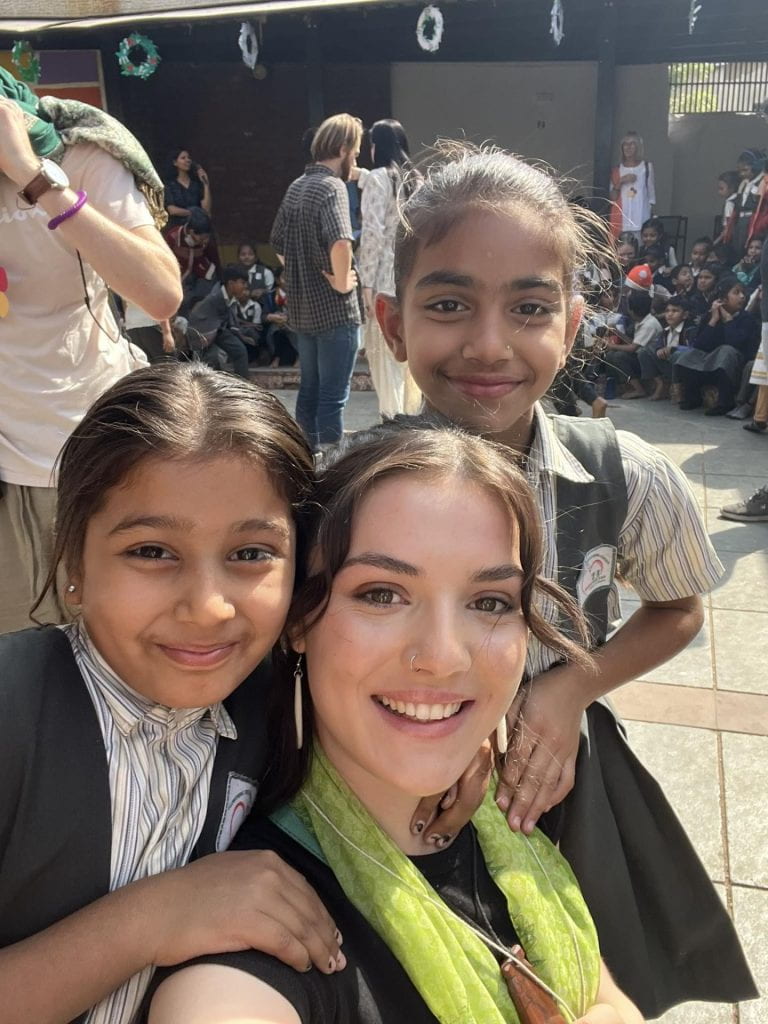Deep in the colourful labyrinths of Dharavi, I passed industrious parents, playful schoolchildren and dedicated craftspeople who brought a familiar whakatauki to the front of my mind;
“He taura harakeke, ka kukumea, ā tōnā wā, ka whati. He taura tangata, ka kukumea, ahakoa ka pehea te roa, e kore rawa e ngāmotu.”
(A chord made of flax, when stretched, will eventually break. But a chord of human connection, no matter how far stretched will never be severed.)
When my Uncle Rā shared this kōrero with me, I considered how material hardship has stretched but never broken the human strength of our Wairarapa hapū. We often mistakingly assume that physical infrastructure can prove or disprove the wellbeing of the communities we live in, and those we don’t. This week in Mumbai and Ahmedabad, this assumption was challenged as I explored urban landscapes that I had known through grim narratives of impoverishment and despair and found a communal wealth of innovation, creativity, resilience and reciprocal service.

The word “slum” often conjures visions inspired by the world of depicted in Slumdog Millionaire—replete with poverty, chaos, and despair. On the train into Dharavi – the Mumbai neighbourhood of 1.5 million where this Oscar-winning film was set – these preconceptions weighed heavily on my mind. However, the initial moments of our exploration unveiled a different reality: one marked by striking examples of human creativity, resourcefulness, and vitality. I listened eagerly as our guide, Hitesh, illustrated key events that shaped Dharavi’s unique urban landscape. Much of Mumbai is reclaimed land, with Dharavi originally being an island home to a fishing community. Colonial influences led rural migrants from to settle in Dharavi as early as 1840. Gujarati potters were some of the first arrivals, followed by tanners, cobblers and recyclers who form a rich tapestry of vocation-based sub-communities. On our tour we saw the uniqueness of each, with the potters community having a Mediterranean resemblance. Hitesh explained that Dharavi’s long-standing industries provide job security and relatively higher pay which continues to attract migrants from areas with dwindling economic opportunities. Unfortunately, the dwellings here were illegal until around 30 years ago, when legal reforms granted property rights to Dharavi’s residents. This enabled residents to access many more public services and even rent their buildings out for extra income. Since then, our guide Hitesh says that crime rates have dropped while education, sanitation, electricity access and quality of life have increased.

Our tour company, Reality Tours, is one of many grassroots organisations which are continuing to empower Dharavi. Countless outsiders – like us – have been escorted around the impressive industries and creative corners of the community, and challenged to reconsider common misconceptions. These tours have increased Dharavi’s community pride. For example, we visited a factory shop of a company which originally produced knock off designer bags but now makes beautiful leather goods proudly stamped with their own “Dharavi” logo. Reality tours return their profits to the community through schools offering high-quality education to children and adults alike. After hearing how skilled Dharavi has been in their self-determined development initiatives, it was disheartening to hear of external pressure to set up high-rise apartments in its place. Initially the proposal might seem like a great opportunity for residents to live in clean, modern housing with better facilities. However this “development” threatens the community cohesion, traditional industries and self-sustaining lifestyles which define Dharavi. l left Dharavi thinking about the outcomes that are possible when communities are empowered to pursue grassroots action that uplifts their existing strengths.

After our eye-opening tour of Dharavi, Mumbai, we had the privilege to visit another slum community in Ahmedabad which exemplified relationship-first development. Although smaller and less condensed, Ram Rahim No Tekro holds a heritage just as rich as Dharavi. Even its’ name reflects it’s resilience and cohesion. Muslim and Hindu communities had originally had different names for their shared neighbourhood. After religious tensions heightened, the community decided to adopt the name Ram Rahim No Tekro, which affirms both faiths and peace between them. Since then, regular interfaith meals have helped neighbours remember their collective humanity and prevent conflict within the community even when tensions arise nearby. Another key source of unity and wellbeing for the neighbourhood is its community centre. On the site of what was once a dump, local charity Manav Sadhna has created a hub which feels very much like the heart of the Ram Rahim No Tekro. The organisation had humble beginnings, offering supplementary schooling and nutrition to low-income communities in Ahmedabad. After building close relationships with families throughout Ram Rahim No Tekro they heard what other gaps existed and developed more services to address them.

Today the centre offers comprehensive schooling, nutrition, health, career and support. We had the honour of meeting students and staff at the school. Their principal Nilam beautifully explained their motto “Love all, serve all”. She also emphasised the holistic nature of their services. Teachers deliver values-based education, and visit their students homes monthly to understand their family situations, so they may better assist the students. Another leader and teacher by the name of Nimo emphasized the importance of serving and loving others without expectation of a particular outcome. Manav Sadhna does not prescribe or force particular services. They develop trusting relationships so they can hear what issues are affecting the wellbeing of that particular community, and this shapes the kind of support they offer. Their services have been so transformative that many past students have come back to work with them. Manav Sadhna showed that the most effective, sustainable development starts with building relationships of trust.
Dharavi’s vibrant small industries and development history highlighted resilience and resourcefulness, while Ram Rahim No Tekro exemplified a unique, relationship-centred approach to problem-solving. I was reminded that our taura tangata is stronger than our taura harakeke and that infrastructure lacks greatness without human connection. Despite challenges like sanitation and housing, I left these neighbourhoods with priceless lessons about community well-being and a transcendent sense of hope.